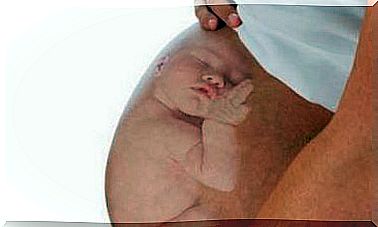Childbirth Thrusts: What Are They And How To Do It?

Types of childbirth jerks
There are two types of birth jerks. While spontaneous pushing occurs naturally and guided by the mother, directed pushing occurs when the medical team attends the birth. Here we will explain in detail:
spontaneous pushing
Spontaneous or physiological pushing occurs when the mother feels the need to push, following her natural instinct in the process. Experts agree that they prefer that the pushes of childbirth occur naturally and are guided by the mother, so that the process and duration of childbirth are not altered. Furthermore, studies indicate that they can reduce the possibilities of instrumental births, benefit the pelvic floor and minimize the risk of perineal trauma.
directed pushes
Directed pushing occurs when the medical team conducts the delivery process. That is, the team indicates to the mother when to push, based on monitoring the contractions. The decision to perform directed pushes is usually made when the mother does not perceive the natural need to push, which may originate from the administration of epidural anesthesia.

Disadvantages of Directed Push
- Increased risk of damage to the pelvic floor structure .
- Increased maternal stress and fatigue.
- Increased chances of perineal tears or episiotomy.
- Abnormal fetal heart patterns.
- It can generate urinary incontinence.
- Higher rates of births assisted by forceps or suction cups and cesarean sections.
- It limits the mother’s ability to give birth in a natural way.
How to correctly perform the pushes of childbirth
Although it is natural for the mother to feel the need to push, it is important to make the push coincide with the contraction, which will make the two forces unite and make the baby go down more quickly. These birth jerks are caused by the baby’s head putting pressure on the mother’s pelvic floor.
To perform the push correctly, force must be exerted by contracting the abdominal wall and pushing down and, whenever possible, following the process of contraction. Breathing plays a very important role, because the mother can be much stronger if she controls her breathing.
Here we explain step by step how they should be done:
- One must associate the push with the contraction and work both forces at the same time.
- The mother must contract the abdomen and at the same time push down.
- The mother must control her breathing, so that she can exercise control over her strength.
What’s the best way to push?
Some experts believe that the traditional approach to pushing during childbirth should be rethought. They emphasize that it is most advisable for mothers to let their bodies show them when and how to push. They comment that while the directed push can be of great help, it should not be routinely resorted to.

On the other hand, the World Health Organization (WHO) recommends that it is best to allow mothers to push spontaneously and warns that they should not be allowed to hold their breath and push for an extended period of time. This process also depends on the mother when she correctly perceives the signs of childbirth.
Thus, it is concluded that the most recommendable thing during childbirth is that the process develop spontaneously and not be forced, waiting for the contractions so that the mother can have more strength. Likewise, during prenatal visits you can consult your doctor if you have any questions.









